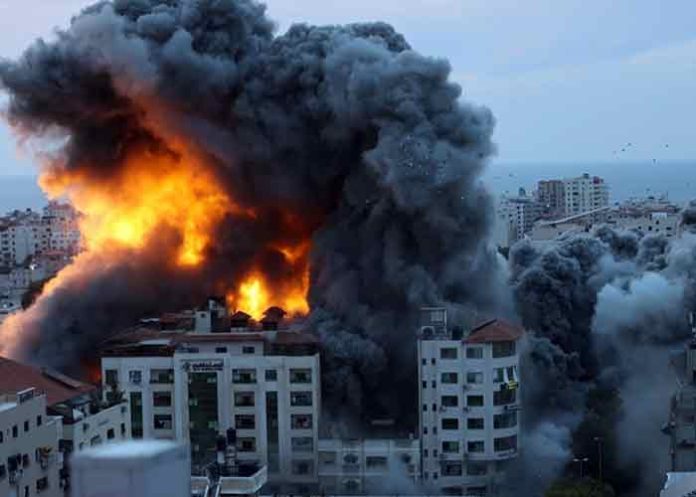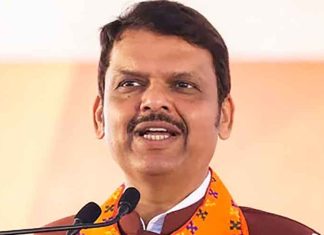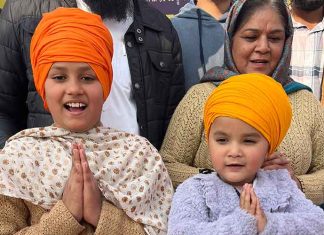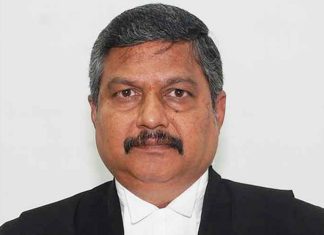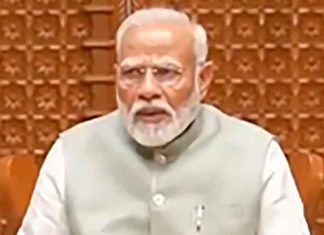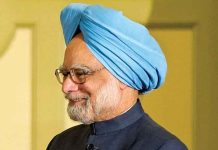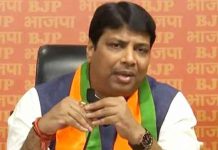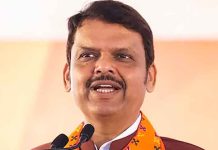New Delhi: The unending Ukraine-Russia military confrontation, the Israel-Hamas conflict now escalating into a ‘war-like’ situation between Iran and Israel, and the ongoing global threat of terrorism rooted in faith-based motivation, have together exposed the world to a kind of geopolitical stir that has impacted all nations — big and small — for the first time since the end of the Cold War.
In all of this an underlying feature is that — post-Cold War — the world seemed to have transited to an era of ‘proxy wars’ translating into cross-border military encroachment, separatist violence instigated from outside and terror attacks by non-state actors.
Nuclear deterrence that kept the bipolar world from sliding into another World War, did not apparently come into operation in the age of ‘limited wars’. This provides a new context to the two major conflicts of our times — Ukraine-Russia ‘war’ in the East European theatre and the Israel-Iran military confrontation in the Middle East.
These are proving to be the combats of attrition in which the warring sides adopted shifting tactics as they constantly evaluated their economic support and supply of war equipment.
The world could be getting attuned to an ongoing military conflict in some part of the world or the other without running into the serious threat of a global war.
Notwithstanding the fact of Russia and Israel talking about the possible use of tactical nuclear weapons in certain situations — in the case of Russia this was meant to deter NATO powers from getting directly involved with the Ukrainian side while for Israel it was a warning to Iran against further escalating the military confrontation — the two theatres of military conflict were not about to precipitate a world war.
After the Cold War ended the US — driving a unipolar world order — was inclined to intervene only in significant cross-border conflicts or civil or ethnic violence in national or regional settings and that too by first assembling coalitions for the purpose.
It is 9/11 however, that exposed the US to the new global terror that was relying on building ‘motivation’ on the faith-based war cry of Jehad. This resulted in the so-called ‘war on terror’ launched by the US-led ‘World Coalition’ — first in Afghanistan and then in Iraq — against the Islamic radical forces that were already spreading across geographical boundaries as non-state actors.
The military contest of the US with China — the emerging superpower — was being pursued by the former with a cautious realisation that China under President Xi Jinping was evidently taking the economic route to becoming the alternate superpower rather than opting for a military showdown.
Also, the Biden administration had become deeply preoccupied — along with NATO — in backing Ukraine with money and material, against the military intervention of Russia two years ago.
That has understandingly produced an unending military confrontation.
The fact that Russian President Vladimir Putin had initially claimed that his intervention in Ukraine was not an act of ‘war’ but was a move to protect the vital interests of the Russian-speaking people of East and Southern Ukraine, also kept the US-Europe support to Ukraine in a ‘proxy’ mode.
The scene has not changed in spite of the escalation caused by the use of drones by the two sides to attack the urban centres of the opponent.
The world is still hoping that a resolution to the two major conflicts that caused global concerns will be found sooner rather than later.
An important feature of the current geopolitical conflicts is the role of technology in sustaining proxy offensives and prolonging a confrontation without precipitating a conventional ‘war’. Though militarily kept limited, conflicts are being made more comprehensive and extended to ‘non-military’ spheres as illustrated by the use of social media for ‘influencing’ operations, targeting of economic assets of the opponent, utilisation of combat technology in drones and robots, ‘denial of use’ attacks and adoption of ‘alternate internet connectivity’ and resort to the tactic of diverting the military energy of the opponent to some other trouble spot.
The US is keeping the potential conflict between Beijing and Washington in Taiwan in check by giving a higher profile to Quad. Even for the US which is the only superpower capable of countering an opponent in all spheres simultaneously, there is a new challenge of keeping the scattered regional conflicts of global concern, under a reasonable control.
Today’s wars are not a repeat of old conflicts. The world scenario is moving in the direction of making conflicts the only constant — at the cost of stable global peace.
A country like India has to build the capacity to handle issues of economy and security on different fronts to maintain its ‘independent’ approach. Fortunately, this country is already doing that on a note of success.
In the Middle East, the war-like confrontation between Iran and Israel is impacting the global political order. A subset of this is the contest between the two dominant powers in the region — the Islamic Republic of Iran representing Shia Persians and the Kingdom of Saudi Arabia of Sunni Arabs.
The two countries control nearly a third of the world’s oil resources and a fifth of its natural gas.
Ayatollah Ali Khamenei, the Supreme Leader of Iran stands for a ruthless theocracy while Crown Prince Mohammed bin Salman wants to modernise Saudi Arabia somewhat at the cost of Islamist orthodoxy.
Fundamentalist Shiism is totally against the US while Saudi Arabia is one of the closest American allies. Apart from the fact that Iran has taken Hamas in its embrace, Tehran-backed proxies and militias dominate four Arab states — Iraq, Lebanon, Syria and Yemen.
For India, the way out is to evenly handle Iran and Saudi Arabia while upholding the idea of Israel rightfully co-existing with a Palestinian state.
The Middle East stir has created an impact on the Ukraine-Russia conflict too. Though Ukrainian and Russian forces are the only troops on the ground, the US and NATO allies have extended unprecedented financial and material support to Ukraine. China, North Korea and Iran are on the other hand assisting Russia in crucial ways.
India’s approach to bilateral dealings with all countries, including the US, Russia, Ukraine, Israel, Iran and Saudi Arabia has proved rewarding in as much as it has made India the voice of peace and conflict resolution. In an uncertain geopolitical scenario, the trust of the international community enjoyed by India is a definite advantage not only for this country but also for the broader cause of humanity.
Today conflicts have shifted from land to the sea, from the battleground to cyberspace and from the military to the socio-economic plane as the frontal military attack was giving way to proxy offensives.
The rise of terrorism as an instrument of proxy war has overshadowed military conflicts and made countermeasures for defence so much more difficult.
The emergence of sea-based struggles has turned the maritime domain into a site of direct conflicts.
Ukraine has taken out more than 20 Russian ships in the Black Sea while Houthi attacks have largely closed the Red Sea — the US was finding it difficult to ensure the security of that maritime stretch.
The turbulent Indo-Pacific reflects the difficult task of establishing a ‘rules-based order’ there.
Greater access to capital and R&D capacity has made the development of new weapons and new technologies a source of transformational impact on the ways wars are fought.
As regards the induction of cyber technology in military conflicts, mention may be made of the precision-guided munitions of the West used in the Ukraine-Russia war which were rendered ineffective through electronic jamming by the other side.
In Ukraine in a display of war technology ‘robots’ were used for patrolling on the ground on one hand whereas suicide teams of terrorists could carry out surprise attacks, on the other, using conventional auto-rifles and grenades — as was seen in the terror offensive of Hamas on Israel on October 7, 2023, and the assault on a concert at Moscow by ISIS-K in March 2024.
Further, US-aided use of Artificial Intelligence has made it possible for the Ukrainian military to ‘visualise’ the battlefield and make effective decisions.
Also, it is important to understand how social media campaigns for ‘influencing’ and ‘narrative building’ could complement the strategy of collaboration with allies and partners to produce deterrence.
On the whole, it seems that the present military conflicts seek to advance the territorial and economic interests of the contesting parties who were consciously avoiding the push for a ‘global war’ of uncertain dimensions.
The missile attack of Iran on Israel, the success of Israel’s sophisticated air defence in neutralising most of these missiles and a sense of restraint shown by both sides in unleashing an all-out ‘war’, pretty well prove the point.
India has to keep up a well-considered strategy of negotiating with the conflict-ridden geopolitics of our times. (Agency)




